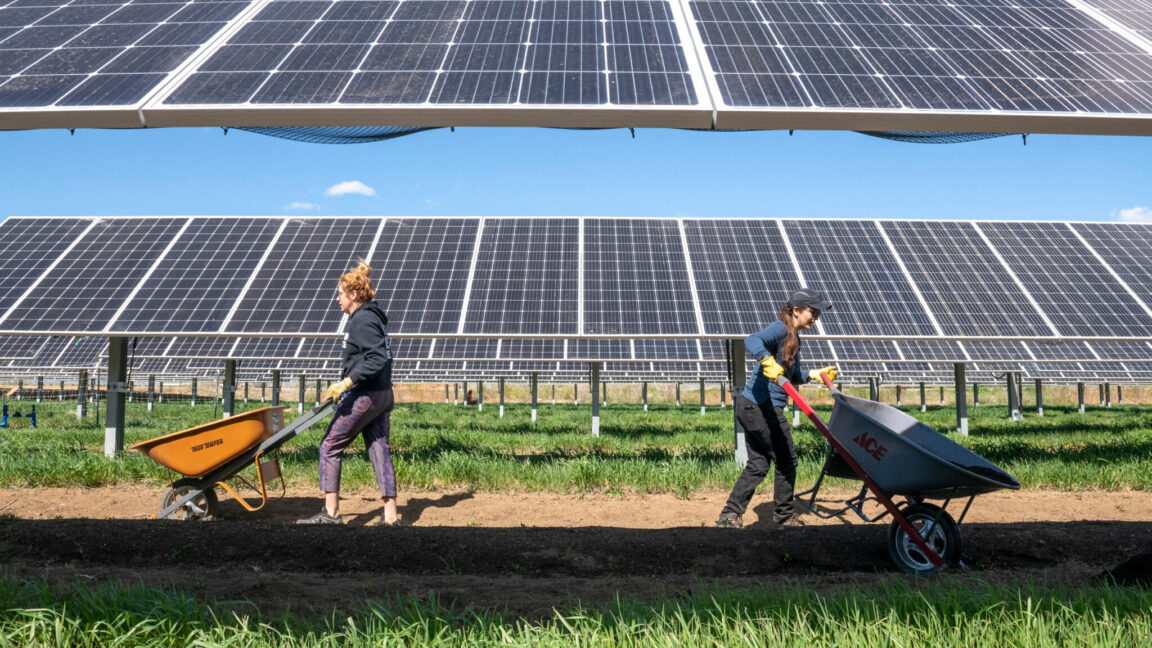
""We were getting basil leaves the size of your palm," University of Arizona researcher Greg Barron-Gafford said, describing some of the benefits he and his team have seen farming under solar panels in the Tucson desert."
"Researchers like Barron-Gafford think that, in addition to generating carbon-free electricity, agrivoltaics could offer a ray of hope for agriculture in an increasingly hotter and drier Southwest, as the shade created by these systems has been found to decrease irrigation needs and eliminate heat stress on crops."
"The cooling effects of growing plants under solar arrays can actually make the panels work better."
"An optimal functioning temperature for panels is around 75° Fahrenheit, he explained. Beyond that, any temperature increase reduces the photovoltaic cells' efficiency."
Integrating solar arrays with agriculture, known as agrivoltaics, provides multiple benefits, particularly in arid regions like the Southwest. Research shows that crops grown under solar panels experience less heat stress and require less irrigation. This setup not only contributes to carbon-free electricity generation but also enhances the productivity of solar panels as moist crops help cool them down. Despite the advantages of agrivoltaics, challenges such as farmer attitudes and funding issues need to be addressed for its wider adoption.
Read at Ars Technica
Unable to calculate read time
Collection
[
|
...
]